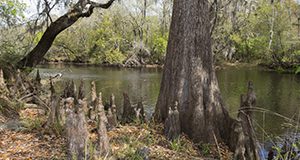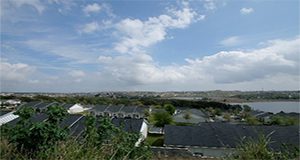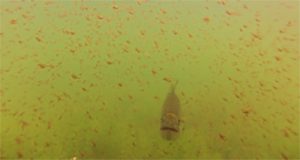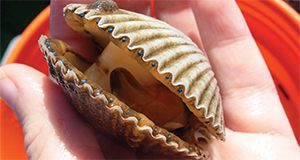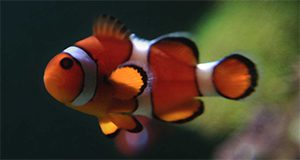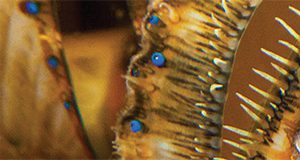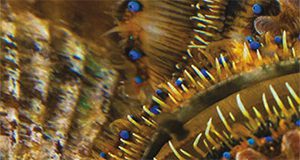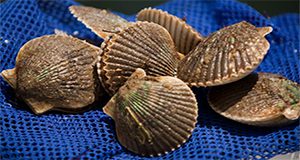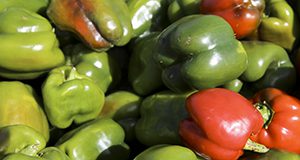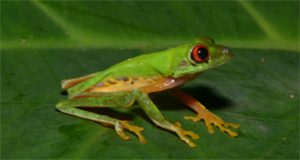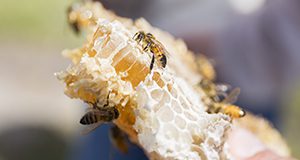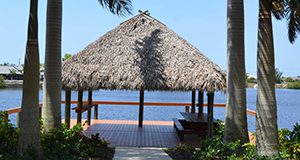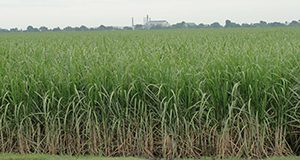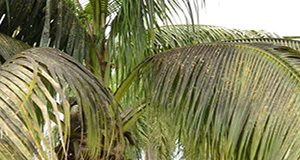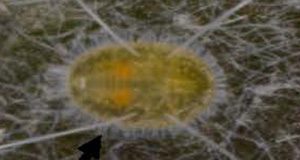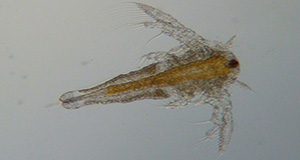Feral swine are an invasive or nuisance species in Florida and most other states because their incessant rooting is ruinous to natural and agricultural habitat. They loosen the soil, destroy native vegetation, and modify the natural chemistry and nutrients of the soil, causing widespread destruction in natural ecosystems, agricultural areas, livestock pastures, and residential areas. They also carry numerous diseases, some of which are transmittable to wild and domestic animals and humans. Trapping and removing swine from your property is an effective way to reduce or control feral swine populations. This 9-page fact sheet written by Bethany Wight and Raoul K. Boughton and published by the UF/IFAS Wildlife Ecology and Conservation Department describes the most commonly used trapping techniques and illustrates several trap and gate designs.
https://edis.ifas.ufl.edu/uw440
Category: Ecosystems & Species
Key Plant, Key Pests: Baldcypress (Taxodium distichum)
This 4-page document is one in the Key Plant, Key Pests series. It provides information on the management of common pests found on baldcypress. Written by Juanita Popenoe, Caroline R. Warwick, and Roger Kjelgren and published by the UF/IFAS Environmental Horticulture Department, June 2018.
http://edis.ifas.ufl.edu/ep557
A Brief Summary of the Water Bill, SB 552
This 5-page document written by Lisa Krimsky, Andrea Albertin, Charles Barrett, James Fletcher, and Mary Lusk and published by the UF/IFAS Program in Fisheries and Aquatic Sciences of the School of Forest Resources and Conservation is intended to act as a quick reference guide and is not inclusive of all measures in SB 552. This summary addresses the Florida Springs and Aquifer Protection Act, the Central Florida Water Initiative, Northern Everglades and Estuaries Protection, and Pilot Programs for Alternative Water Supply.
http://edis.ifas.ufl.edu/fa205
Bed Fishing for Florida Bass
Florida bass, Micropterus floridanus, is the most popular freshwater sport fish in the state of Florida. Florida bass guard their nests for up to 2 weeks, and many anglers target the prized sport fish during this period using a procedure called bed fishing. This 7-page fact sheet written by John S. Hargrove and James D. Austin and published by the UF/IFAS School of Forest Resources and Conservation, Program in Fisheries and Aquatic Sciences, outlines the reproductive biology of Florida bass, the known consequences of bed fishing, and practices to minimize its impacts.
http://edis.ifas.ufl.edu/fa204
Cat’s-Claw Vine, Dolichandra unguis-cati : A Showy but Invasive Plant in Florida
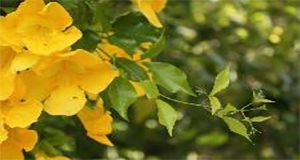
Cat’s-claw vine is a neotropical, climbing perennial that produces large and showy yellow flowers in the springtime. Unfortunately, the aggressive nature of the vine has made it a major weed in China, Australia, South Africa, and parts of the southeastern United States. This 6-page fact sheet written by Niels Proctor and Jason Smith and published by the UF/IFAS School of Forest Resources and Conservation provides guidance on identification and control of this invasive vine and suggests some similar native vines to use instead.
http://edis.ifas.ufl.edu/fr391
Recreational Harvesting of the Florida Bay Scallop: Taylor County
This useful brochure includes a full-color map identifying access routes to the boat ramps and marinas in southern Taylor County near Steinhatchee and Keaton Beach plus the latest information on scallops and scalloping, the recommended equipment you will want to bring, and a few tasty recipes for preparing Florida’s best summertime catch. Written by Victor Blanco and published by the UF/IFAS Extension Florida Sea Grant College Program.
http://edis.ifas.ufl.edu/sg146
Recreational Harvest of the Florida Bay Scallop: Hernando County
This useful brochure written by Brittany Hall-Scharf and published by the UF/IFAS Florida Sea Grant College Program includes a full-color map identifying access routes to the boat ramps and marinas in Hernando County. Also find the latest information on scallops and scalloping, the recommended equipment you will want to bring, and a few tasty recipes for preparing Florida’s best summertime catch.
http://edis.ifas.ufl.edu/sg148
How Ornamental Fishes Get Their Color
Color in fish is mostly genetically determined, but they are unable to produce red, orange, yellow, green, and some blue colors themselves.They get these colors from their food. Fish raised in aquariums or recirculating water systems without pigment supplementation in their diet will fade and lose their vibrant hues. Even in ponds, dietary pigment supplementation can make fishes brighter and more variably colored, just like their wild counterparts. This 6-page fact sheet written by F. A. Chapman and R. D. Miles and published by the UF/IFAS School of Forest Resources and Conservation, Program in Fisheries and Aquatic Sciences, addresses how ornamental fish get their colors and provides a list of ingredient sources for diets that can be used to enhance and intensify fish colors.
Recreational Harvesting of the Florida Bay Scallop: Wakulla County
This handy brochure includes a full-color map identifying access routes to the boat ramps and marinas in Wakulla County, plus the latest information on scallops and scalloping, the recommended equipment you will want to bring, and a few tasty recipes for preparing Florida’s best summertime catch. Written by Savanna Barry and published by the UF/IFAS Extension Florida Sea Grant College Program.
http://edis.ifas.ufl.edu/sg149
Recreational Harvesting of the Florida Bay Scallop: Citrus County
This handy brochure written by Savanna Barry and published by the UF/IFAS Florida Sea Grant College Program includes a full-color map identifying access routes to the boat ramps and marinas in Citrus County near Homosassa and Crystal River, plus the latest information on scallops and scalloping, the recommended equipment you will want to bring, and a few tasty recipes for preparing Florida’s best summertime catch.
http://edis.ifas.ufl.edu/sg147
Recreational Harvesting of the Florida Bay Scallop: Pasco County
This useful brochure written by Brittany Hall-Scharf and published by the UF/IFAS Extension Florida Sea Grant College Program includes a full-color map identifying access routes to the boat ramps and marinas in Pasco County, plus the latest information on scallops and scalloping, the recommended equipment you will want to bring, and a few tasty recipes for preparing Florida’s best summertime catch.
http://edis.ifas.ufl.edu/sg157
Pest Identification Guide: Solanum (Pepper) Whitefly, Aleurotrachelus trachoides
Considered an emerging pest in Florida, the solanum whitefly has been in the state since at least the 1960s. It eats pepper, eggplant, and tomato, as well as other food crops, ornamental plants, and weeds. Learn to identify the little pest with this handy, 2-page guide written by Nicole A. Casuso and Hugh A. Smith and published by the UF/IFAS Entomology and Nematology Department.
http://edis.ifas.ufl.edu/in1201
Frogs and Toads of Northern Belize
Belize is home to several threatened frog species. One of them, the Maya mountains frog, lives nowhere else in the world. This 4-page fact sheet written by Jenna M. Cole, Sarah K. Cooke, Venetia S. Briggs-Gonzalez, Justin R. Dalaba, and Frank J. Mazzotti and published by the UF/IFAS Wildlife Ecology and Conservation Department will help you identify your frogs and toads in order to better protect them.
http://edis.ifas.ufl.edu/uw439
Wax Moth Control
The greater wax moth (Galleria mellonella Linnaeus) and lesser wax moth (Achroia grisella Fabricius) are major pests of honey bee colonies in Florida. The best defense against wax moths in living colonies is keeping colonies otherwise strong, free of diseases and pests, and queenright. Controlling wax moths in stored combs and equipment, however, can be more difficult. This 3-page fact sheet written by Cameron J. Jack and Jamie D. Ellis and published by the UF/IFAS Department of Entomology and Nematology details the steps beekeepers can take to control wax moths and keep them from ruining stored honey bee combs and equipment.
http://edis.ifas.ufl.edu/aa141
Caterpillar Pests of Tiki Huts and Other Thatched Structures
Two species of caterpillars that eat dried sabal palm leaves have been causing problems with thatched structures. If you’ve got a chickee or are planning to get one, you can take steps to protect the thatch. Learn how to identify and manage the two caterpillar pests in this 4-page fact sheet written by Stephen H. Brown and Lyle J. Buss and published by the UF/IFAS Entomology and Nematology Department.
http://edis.ifas.ufl.edu/in1213
Florida Crop/Pest Profile: Sugarcane
Sugarcane (Saccharum interspecific hybrids) is the main source of sugar in the world. It is grown in more than 90 countries in tropical and subtropical regions. Cultivation techniques and production challenges vary by location (Rott 2017; Rott 2018). This 19-page document discusses characteristics of the sugarcane crop and pests affecting its production in Florida, which is the largest producer of sugarcane in the United States. Written by P. Rott, D. C. Odero, J. M. Beuzelin, R. N. Raid, M. VanWeelden, S. Swanson, and M. Mossler, and published by the UF/IFAS Agronomy Department, revised May 2018.
http://edis.ifas.ufl.edu/pi207
Pest Identification Guide: Rugose Spiraling Whitefly, Aleurodicus rugioperculatus
Rugose spiraling whitefly (Aleurodicus rugioperculatus) feeds on over 118 hosts including coconut palm, gumbo limbo, and other fruits and ornamentals. It is a major pest in Florida. Learn to identify these tiny flies with this handy, 2-page guide written by Nicole A. Casuso and Hugh A. Smith and published by the UF/IFAS Entomology and Nematology Department.
http://edis.ifas.ufl.edu/in1202
Pest Identification Guide: Ficus Whitefly Singhiella simplex
Ficuswhitefly (Singhiella simplex) is found on ficus species, especially weeping fig. It is a major pest in Florida. Learn to identify these tiny flies with this handy, 2-page guide written by Nicole A. Casuso and Hugh A. Smith and published by the UF/IFAS Entomology and Nematology Department.
http://edis.ifas.ufl.edu/in1203
Pest Identification Guide: Bondar’s Nesting Whitefly—Paraleyrodes bondari
Bondar’s nesting whitefly (Paraleyrodes bondari) is an emerging pest in Florida that targets ficus species, hibiscus, sugar apple, guava, and citrus, among others. Learn to identify these tiny flies with this handy, 2-page guide written by Nicole A. Casuso and Hugh A. Smith and published by the UF/IFAS Entomology and Nematology Department.
http://edis.ifas.ufl.edu/in1204
Storage of Decapsulated Artemia (Brine Shrimp)
Artemia (brine shrimp) are good food for larval fish, but they have to be removed from their shells before many species can eat them. The process can be time- and labor-intensive, especially since it is often performed every day. Fortunately, this 3-page fact sheet written by Jason Broach, Cortney Ohs, and Isaac Lee and published by the UF/IFAS School of Forest Resources and Conservation, Program in Fisheries and Aquatic Sciences describes a method for storing a 7-day supply of the brine shrimp that will allow the task to be done just once a week.
http://edis.ifas.ufl.edu/fa203

